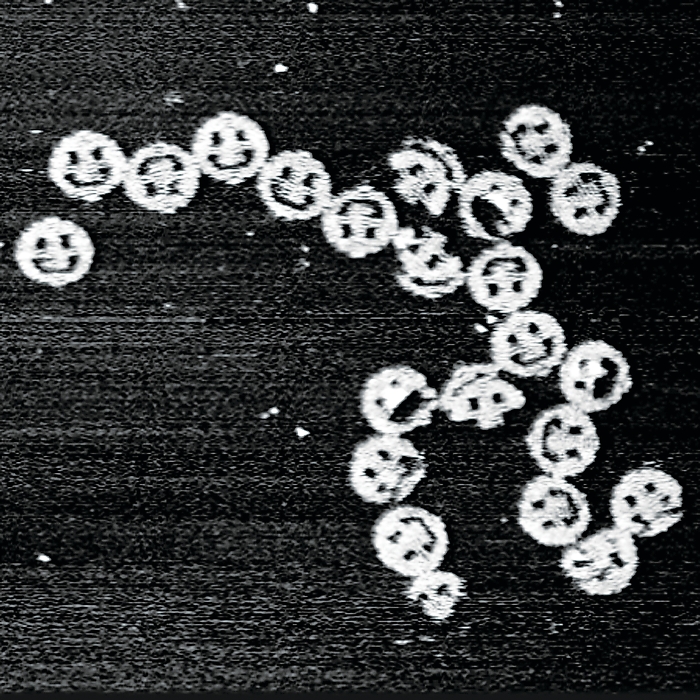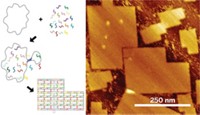Advertisement
Grab your lab coat. Let's get started
Welcome!
Welcome!
Create an account below to get 6 C&EN articles per month, receive newsletters and more - all free.
It seems this is your first time logging in online. Please enter the following information to continue.
As an ACS member you automatically get access to this site. All we need is few more details to create your reading experience.
Not you? Sign in with a different account.
Not you? Sign in with a different account.
ERROR 1
ERROR 1
ERROR 2
ERROR 2
ERROR 2
ERROR 2
ERROR 2
Password and Confirm password must match.
If you have an ACS member number, please enter it here so we can link this account to your membership. (optional)
ERROR 2
ACS values your privacy. By submitting your information, you are gaining access to C&EN and subscribing to our weekly newsletter. We use the information you provide to make your reading experience better, and we will never sell your data to third party members.
Analytical Chemistry
Scientists smiled with DNA origami
Once used to design tiny smiley faces, the nanoscale patterning technique is gaining credibility as a practical tool
by Bethany Halford
December 15, 2016
| A version of this story appeared in
Volume 94, Issue 49

\

\
Ten years ago, Rothemund used DNA origami to create nanoscale smiley faces. This year he used the technique to recreate a fluorescent dime-sized version of Van Gogh’s “The Starry Night.”
Ten years ago, Caltech scientist Paul W. K. Rothemund published the first paper on DNA origami. He demonstrated that one long single strand of DNA could fold into a predetermined shape of double-stranded DNA when it encounters many short single strands of the nucleic acid.
Scientists had previously used DNA to build cubes and other simple geometric shapes. But Rothemund took DNA construction to a new level of complexity, crafting two-dimensional smiley faces, snowflakes, and a map of the Americas just 100 nm across. The work charmed scientists, and Rothemund’s DNA smiley face was featured on the cover of Nature, blown up and colored a cheerful yellow (Nature 2006, DOI: 10.1038/nature04586).
In the intervening years, Rothemund says, the number of people working in the field of DNA origami has grown quickly. Other groups have made more complicated 2-D shapes as well as 3-D shapes, and even DNA origami “nanobots” that change shape in the presence of certain cancer cells. Despite the progress, Rothemund adds, DNA origami has been slow to gain traction among those researchers who might use it practically in areas such as photonics or electronics, for example, to position molecules on semiconductor surfaces.
This year, Rothemund’s group reported using DNA origami to reproduce a dime-sized version of Van Gogh’s painting “The Starry Night.” The DNA folded into photonic crystal cavities tuned so that fluorescent molecules would glow red when installed into the spaces (Nature 2016, DOI: 10.1038/nature18287). “We’re slowly trying to convince physicists that it’s really worthwhile,” Rothemund says.
Hendrik Dietz, now a biophysics professor at the Technical University of Munich, remembers reading Rothemund’s landmark Nature paper when it came out in 2006. At the time, Dietz was a graduate student at TUM working in the area of single-molecule biophysics, and he’d taken the journal to the gym to read it while running on the treadmill. Dietz had been considering changing fields, and after learning about DNA origami, he had found his new calling.
“Ten years ago, people considered DNA origami to be a curiosity—just a way to make funny shapes,” Dietz says. But in the intervening decade he thinks it has become more useful, even if it has primarily been in niche applications, such as precision measurements of biomolecules. For example, Dietz’s group recently used DNA origami to study the stacking forces in DNA (Science 2016, DOI: 10.1126/science.aaf5508).
Although DNA origami has yet to find a killer app, Dietz thinks the technique has already delivered on its promise. “Through the efforts of making increasingly more complex objects, we have learned so much about the molecule DNA,” he says. “I don’t really see how you would have gained that understanding—the thermodynamics, the mechanics, the kinetics—without trying to build something with the molecule. This in itself is of great value.”
C&EN's YEAR IN REVIEW
Top Headlines of 2016
- Hawaii explosion cost a researcher an arm
- TSCA reform crossed the finish line
- U.S. elected Trump as president
- The periodic table got four new elements
- Post Dow-DuPont, chemical deal-making waned as 2016 advanced
- Labs made advances in Zika research
- Four ag giants to rule them all
- 2016 Nobel Prize in Chemistry at a glance
- Brexit bomb exploded
- Focus returned to Iran's chemical industry
- Overtime pay limit doubles under Obama administration
- The CRISPR craze continued
- Perfluorinated compounds got increased scrutiny
- From the lab to the market
- Paris Agreement to curb climate change took off
- World chemical production at a glance
- Flint's water woes lingered
- As China's economy slowed, chemical makers adjusted
- Mostafa A. El-Sayed won the 2016 Priestley Medal
- ACS members on average fared better than young graduates in employment surveys
- ACS invests internationally
- Spun-off firms found their footing in 2016
- Remembering the Nobel laureates we lost in 2016
- ACS proposed chemistry preprint server
- Berkeley College of Chemistry avoided reorganization
- Fight against opioid epidemic continued in 2016
- Noble gas shortages averted, for now
- The shale gas boom by the numbers
- Crop protection products in the crosshairs
- ACS launched new journals
- Website search terms of the year
- Biobased materials hit the big time
- No better deal emerged for Mossville, La.
- U.S. prepares for national food labeling standard
Top Research of 2016
- Mini factory made drugs on demand
- World's first PET-munching microbe discovered
- Liquid metals went to work
- Methylene activation reached new heights
- Biological structures of the year
- Wearable sensors were 'the' fashion accessories of 2016
- Scientists beefed up the antibiotic arsenal
- An enzymatic route to carbon-silicon bonds
- Single-atom catalysts gained a toehold
Revisiting Research of 2006





Join the conversation
Contact the reporter
Submit a Letter to the Editor for publication
Engage with us on Twitter